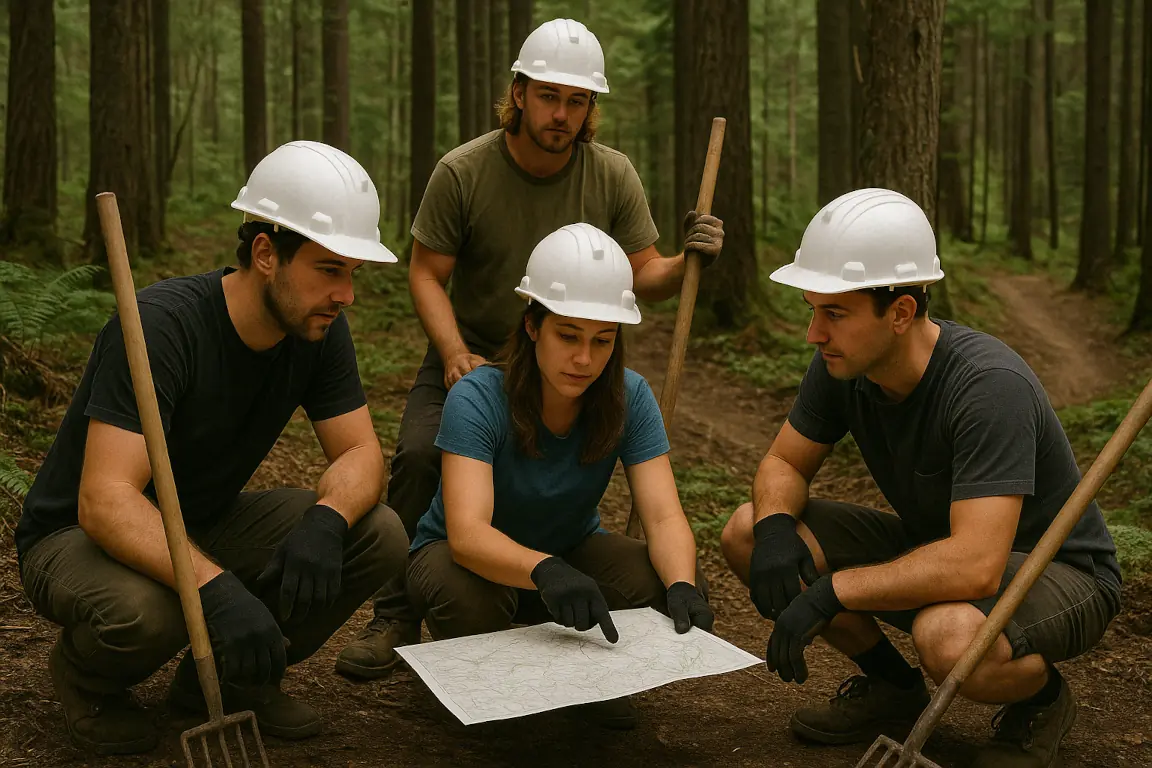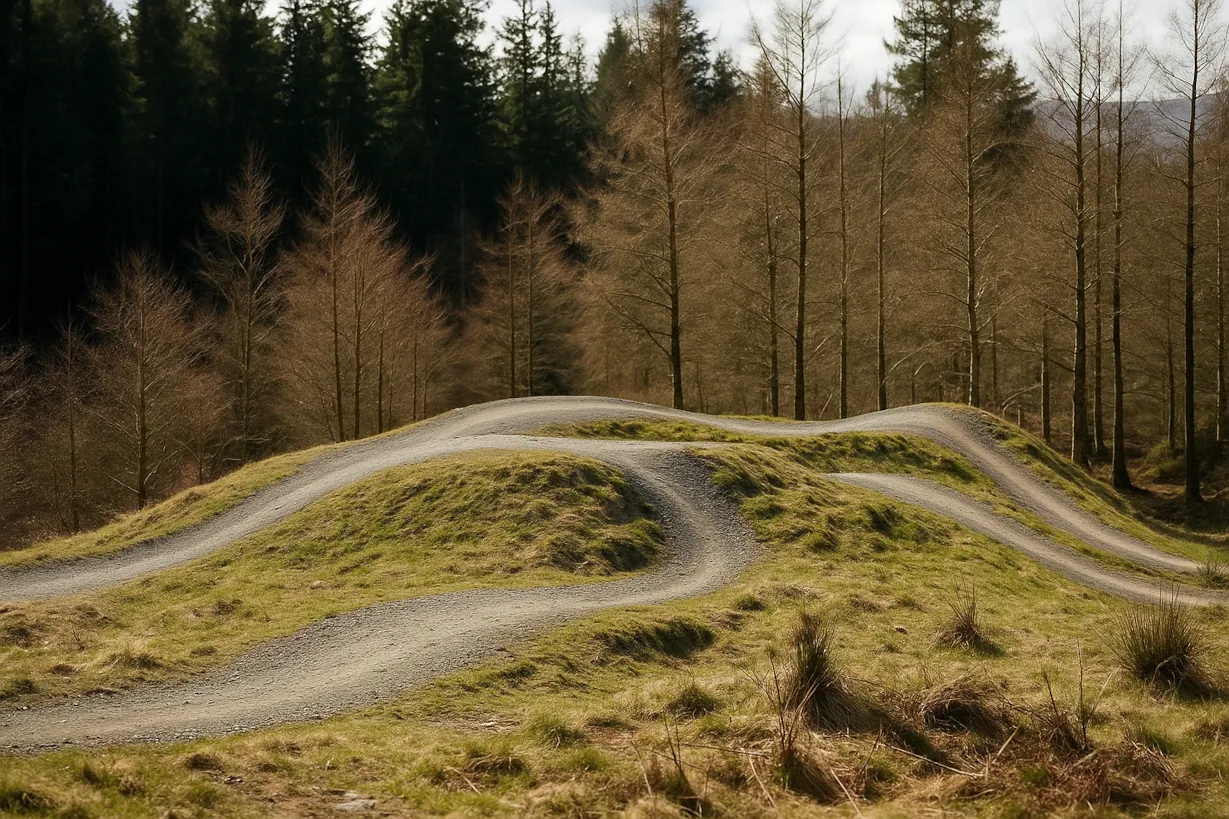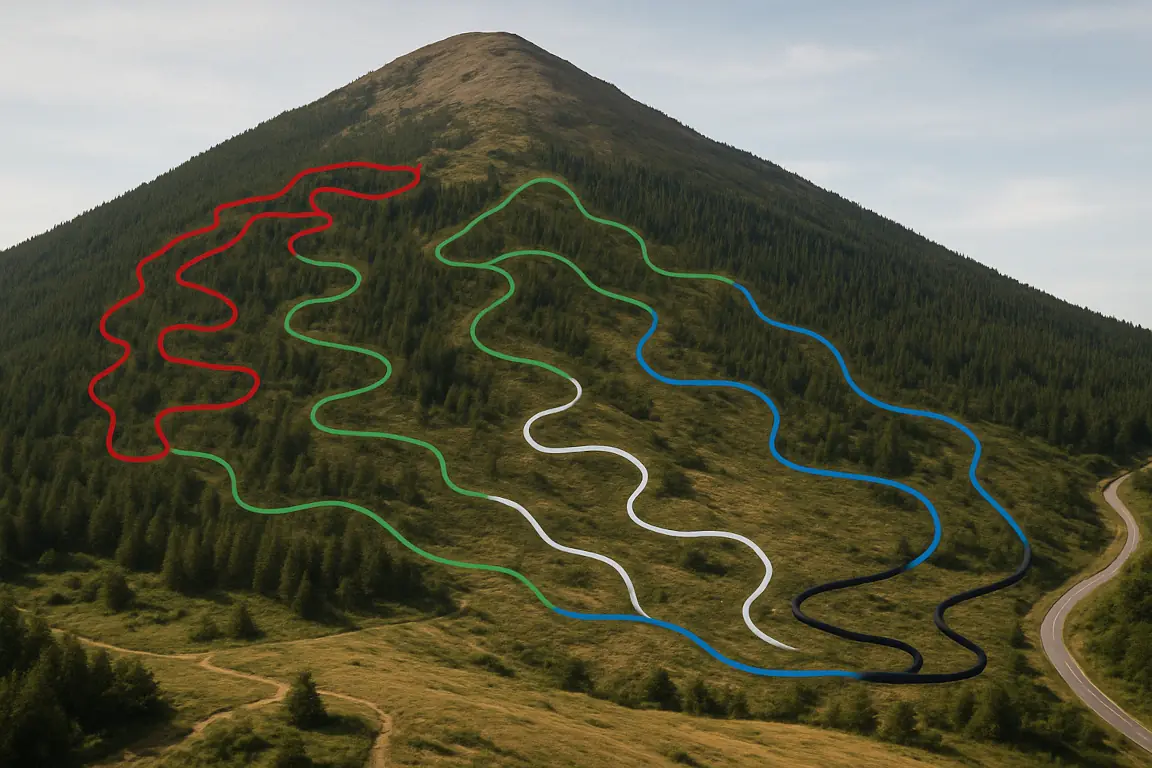Trail Planning Resources
Design principles, mapping tools, and environmental considerations to plan sustainable and exciting trail networks.

Plan Before You Build
Proper planning is the foundation of successful trail projects. Explore our resources to design trails that are sustainable, exciting to ride, and minimize environmental impact.
Trail Design Fundamentals
Good trail design balances rider experience, sustainability, and environmental considerations. These principles will help you create trails that flow naturally with the landscape and provide an engaging riding experience.
- The Half Rule: A trail's grade shouldn't exceed half the grade of the hillside it traverses
- The 10% Average Grade: Maintain an average grade of 10% or less for sustainability
- Maximum Sustainable Grade: Short sections can exceed 10%, but rarely more than 20%
- Grade Reversals: Incorporate frequent grade changes to shed water naturally
- Outslope: Build trail surface with a 5% outward tilt to shed water

The Trail Planning Process
Site Assessment
Evaluate terrain, soil, vegetation, and access points to understand your site's potential.
Conceptual Design
Create initial trail corridors, identify key features, and establish difficulty levels.
Detailed Planning
Flag and GPS the exact trail alignment, identify construction challenges, and plan features.
Approval & Implementation
Secure final approvals, organize resources, and begin the construction process.
Ready to Plan Your Trail?
Access our comprehensive planning resources and start designing sustainable, exciting mountain bike trails today.


